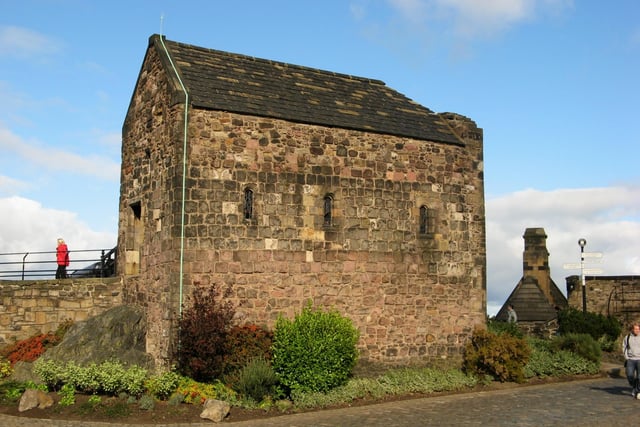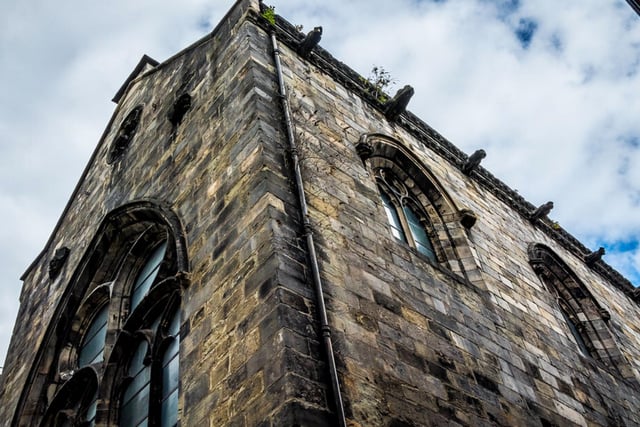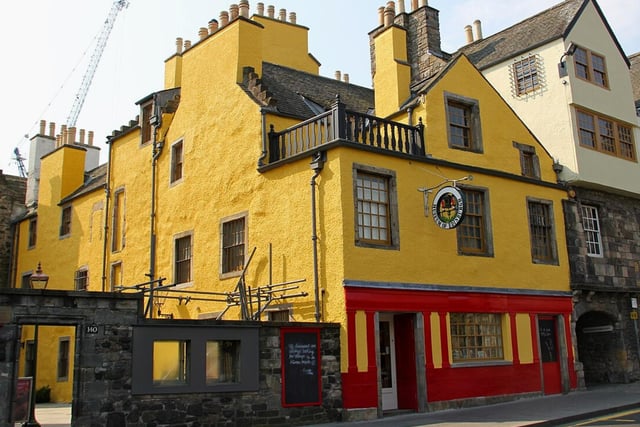If you’re visiting Scotland for the first time and hoping to breathe in the incredible heritage and culture then a stroll through Auld Reekie (Edinburgh in the Scots language) is essential. In comparison to many other European capitals, Edinburgh has a high concentration of ancient architecture and some of these old buildings were constructed well over five centuries ago.
The country boasts fascinating languages, award-winning outdoor scenery,castles and other famous products like whisky, but now let’s turn our attention to nine of the Scottish capital’s oldest buildings for all you lovers of history and architecture.

1. St Giles Cathedral
Founded in the 12th century, St Giles’ Cathedral can be considered one of Edinburgh’s oldest buildings. In its early days, St Giles’ was just a small stone kirk, which stood roughly on the site of the present-day nave. This church was burned down by an attacking English army in the 14th century and subsequently rebuilt in spectacular fashion, owing the building its current look with distinct crown steeple. Although most of the church dates from later centuries, there are elements contained deep within which are considerably ancient. St Giles’ original 12th century doorway survived until just 200 years ago. Despite not having been a seat of bishops since 1638, St Giles’, similar to Glasgow Cathedral, has retained its title as a cathedral. Photo: garyullah via Flickr

2. St Margaret’s Chapel
Thought to have been completed in 1130 by King David in honour of his mother, Queen Margaret, St Margaret’s Chapel has seen a fair few changes in Edinburgh. In fact, as the oldest building in the entire city, it’s seen ALL the changes. The chapel is situated within the walls of Edinburgh Castle, which may sound like a safe place to be until you consider that the castle has historically been the most besieged location in the whole of Britain. Once you factor in the Protestant Reformation of the 1500s and the fact that the chapel lay disused for centuries afterwards - save for a spell as a storage room for gunpowder - it’s actually quite incredible that it’s still standing. Today’s chapel has since been tastefully restored, first by Queen Victoria in the 1850s, who made it usable once more and reintroduced stained glass to its five windows, and again in 1922. Despite the rather compact little chapel only being able to hold around 20 people, modern weddings and baptisms are a regular occurrence at the 900-year-old place of worship. Photo: via WikiCommons

3. Trinity Apse, Chalmers Close
Trinity Apse is all that’s left of the ancient Trinity College Kirk, which was constructed on the eastern banks of the Nor’ Loch in 1460. Both the kirk and a nearby hospital were founded by Mary of Gueldres, consort to King James II. For centuries the little kirk lay undisturbed - even the Reformation couldn’t shake it. Then came the Industrial Revolution... The original kirk was destroyed in the 1840s to make way for an expansion of Waverley Railway Station. It had been intended to move the kirk stone by stone to a new site, and each piece was numbered and deposited on Calton Hill. Unfortunately, thirty years would pass before a decision was made to rebuild the kirk, by which time many of the numbered stones had disappeared. A new church was eventually built on Jeffrey Street, but this too was demolished in 1964. A small section of the rebuilt Trinity College Kirk, known as Trinity Apse still survives and many of the painted numbers from when the kirk was dismantled can still be seen. The apse is located on Chalmers Close, between the High Street and Jeffrey Street. Photo: maleny_steve via Flickr

4. Huntly House
Similar to John Knox House and Moubray House further up the Royal Mile, Huntly House features overhanging gables. It was built around 1570 and has still managed to maintain its historic character. It is thought to have been named in the 17th century after the Marquis of Huntly, who stayed here for a time. The house is sometimes referred to as the ‘speaking house’ on account of Latin inscriptions displayed on its facade. Several inscriptions have been added over the centuries. Huntly House is now home to the Museum of Edinburgh. Photo: via WikiCommons
